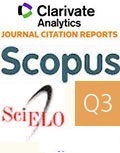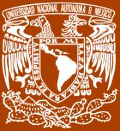Análisis de la recarga potencial en la Cuenca de México usando datos abiertos de la plataforma BM-Recharge
Analysis of potential recharge in the Mexico Basin using open data from the BM-Recharge platform
Saúl Arciniega-Esparza1,2,*, Antonio Hernández-Espriú1,2, Gabriel Salinas-Calleros1,2, Sergio González-Ortigoza3
1 Grupo de Hidrogeología, Facultad de Ingeniería, Universidad Nacional Autónoma de México, Ciudad de México, México.
2 Especialización en Agua Subterránea, Facultad de Ingeniería, Universidad Nacional Autónoma de México, Ciudad de México, México.
3 Programa de Maestría y Doctorado en Ingeniería, Universidad Nacional Autónoma de México, Ciudad de México, México.
* Autor para correspondencia: (S. Arciniega Esparza) This email address is being protected from spambots. You need JavaScript enabled to view it.
Cómo citar este artículo:
Arciniega-Esparza, S., Hernández-Espriú, A., Salinas-Calleros, G., González-Ortigoza, S., 2025, Análisis de la recarga potencial en la Cuenca de México usando datos abiertos de la plataforma BM-Recharge: Boletín de la Sociedad Geológica Mexicana, 77(1), A071124. http://dx.doi.org/10.18268/BSGM2025v77n1a071124
Manuscrito recibido: 5 de Marzo, 2024; Manuscrito corregido:22 de Junio, 2024; Manuscrito aceptado: 5 de Julio, 2024.
ABSTRACT
Potential recharge is a crucial variable for groundwater management; however, this information is often unavailable or outdated in many regions. In recent years, advances in remote sensing, modeling, and technological development have allowed regional estimation of recharge at high spatial and temporal resolution, as well as open access to this information through interactive applications. This article shows the development and implementation of the open-access web tool known as BM-Recharge (bm-recharge.ingenieria.unam.mx), for the spatial and temporal analysis of potential recharge in the Mexico Basin. BM-Recharge has been developed from historical simulations of potential recharge with the USGS Soil Water Balance model for a period from 2001 to 2021 using station data and data derived from remote sensing and global products, allowing to query, visualize, and download the information at pixel, aquifer and hydrogeological zone scales, as well as in monthly and annual time steps. Based on the data from this platform, a spatial and temporal analysis of the water balance and recharge is presented to characterize the hydrological variables and the areas of highest recharge in the Mexico Basin. From the analyzed results, it is estimated that, on average, of the total annual precipitation in the basin, about 6% is converted to potential recharge, and about 77% is evapotranspired. In addition, the Sierra de las Cruces, Sierra de Chichinautzin, and Sierra Nevada represent about 60% of the potential recharge volume in the basin, with these three mountain ranges covering an area of less than 25% of the basin’s surface. Finally, the importance of having interactive web tools to bring this information to different sectors for educational purposes, dissemination, and better decision-making on water issues in the Mexico Basin is highlighted.
Keywords: web platform, water balance, numerical modeling, potential recharge, Mexican Basin.

